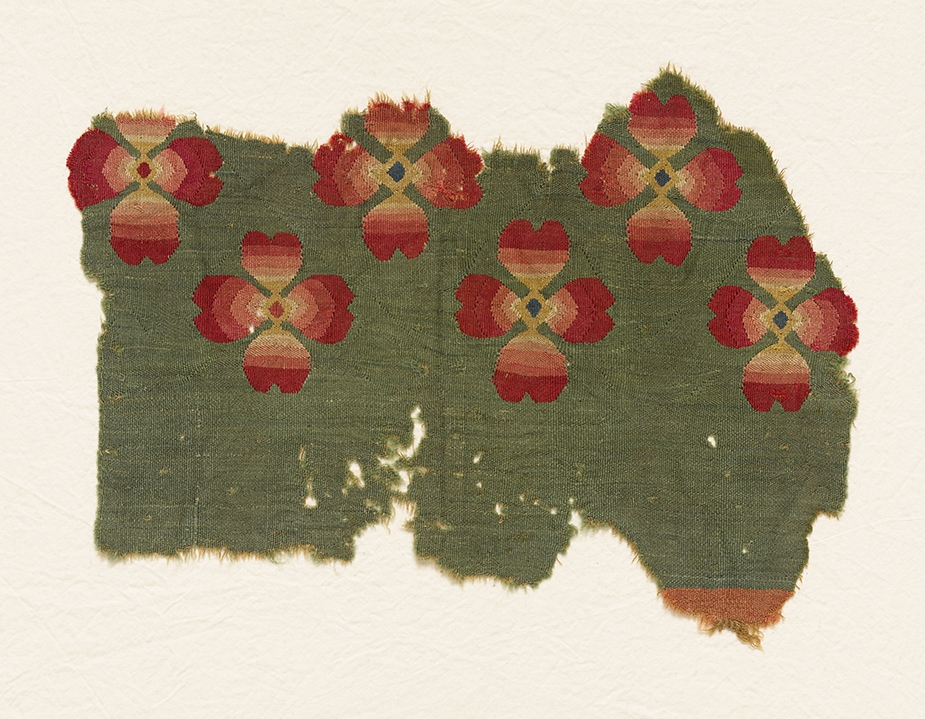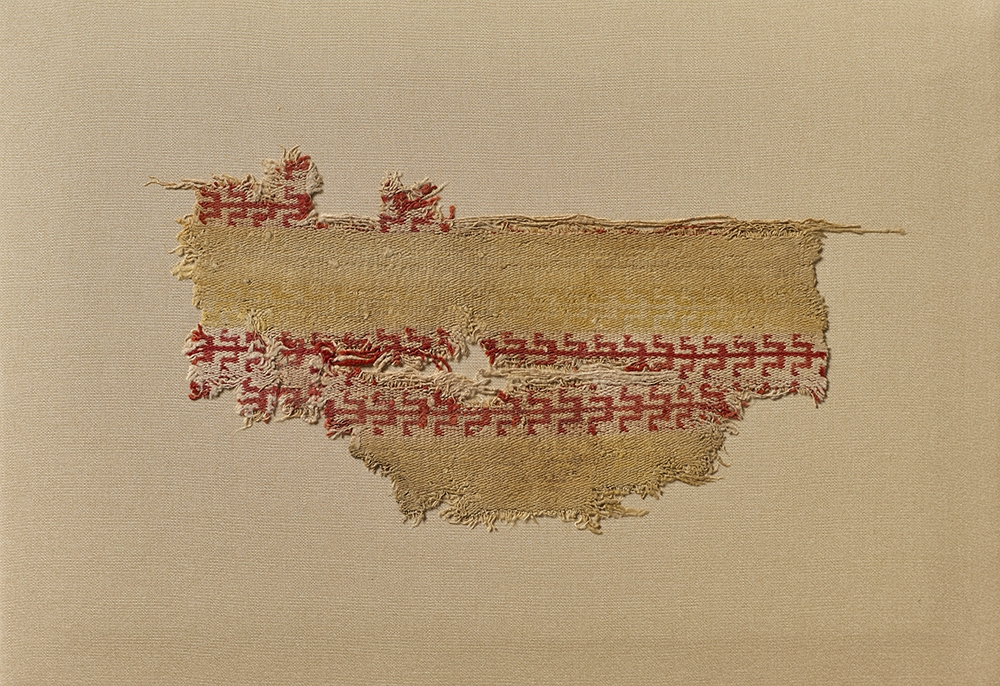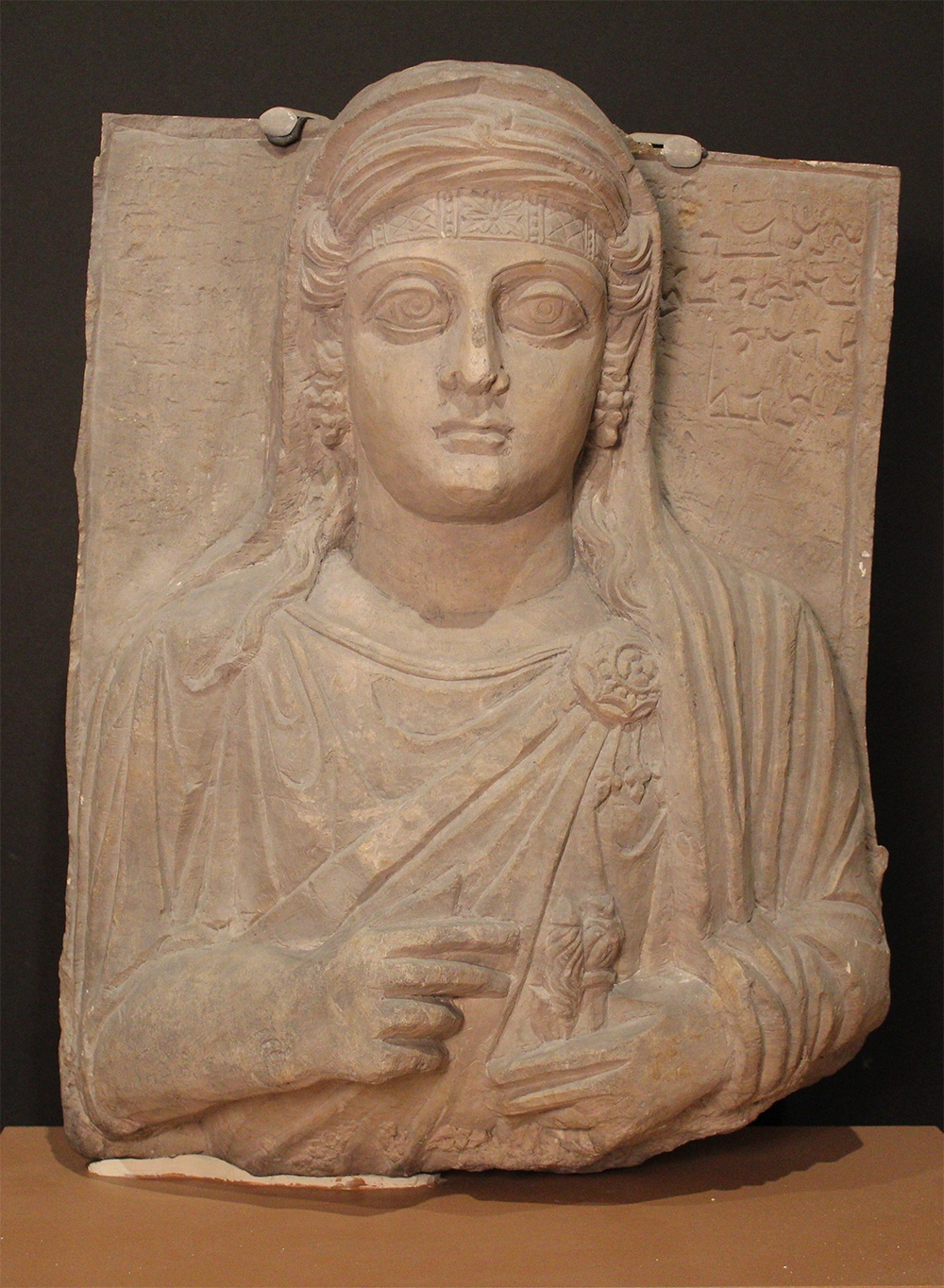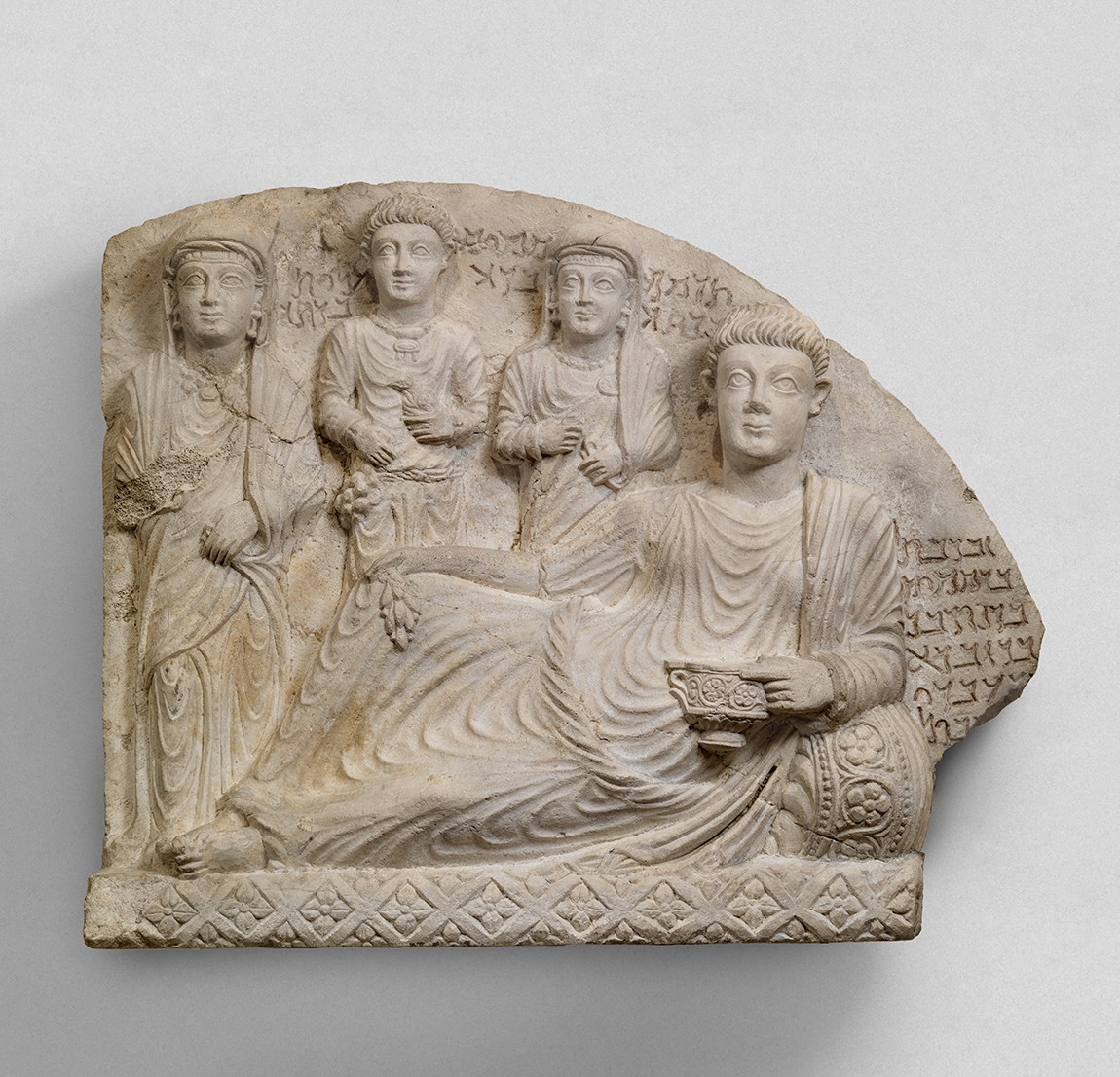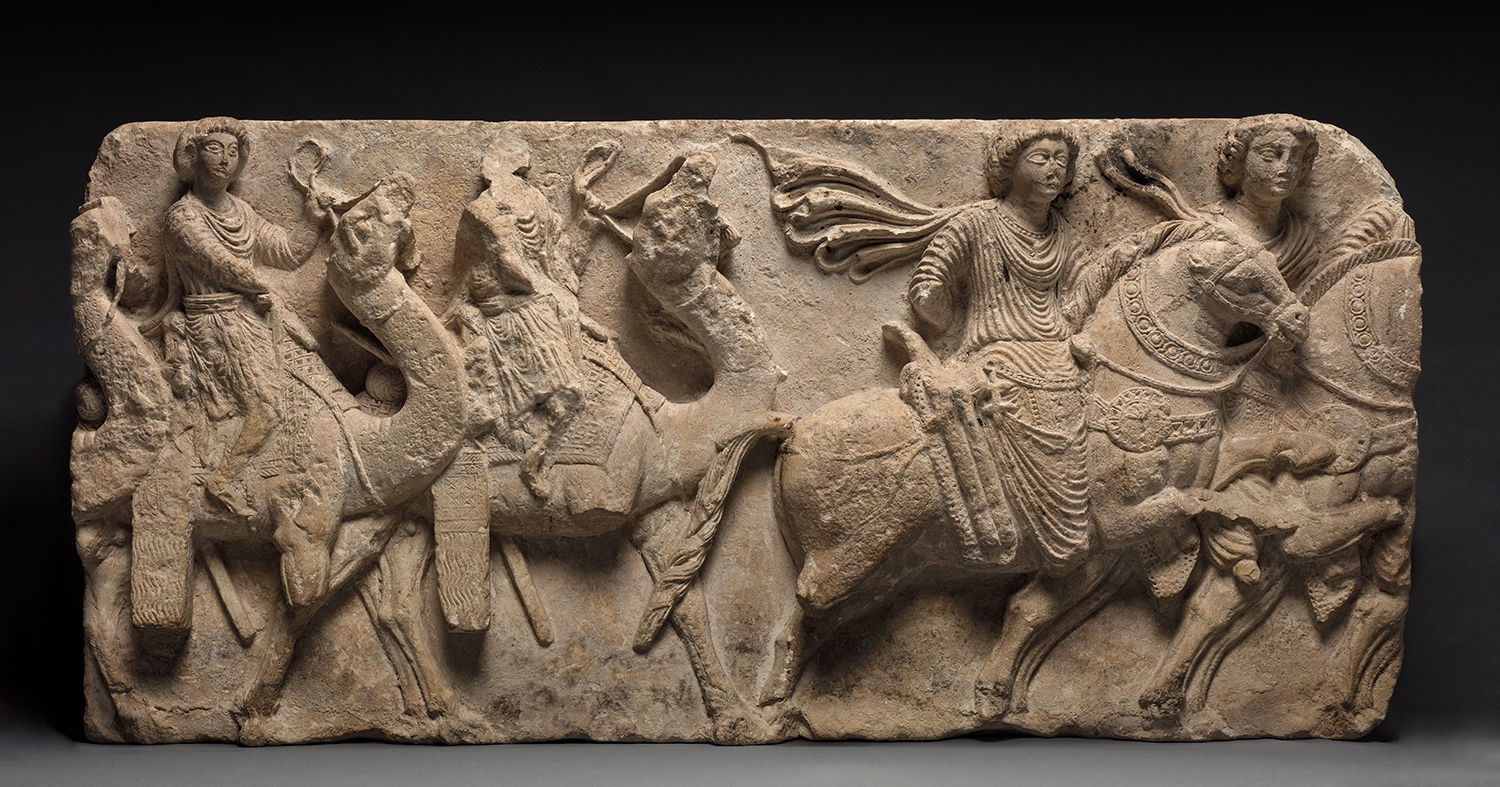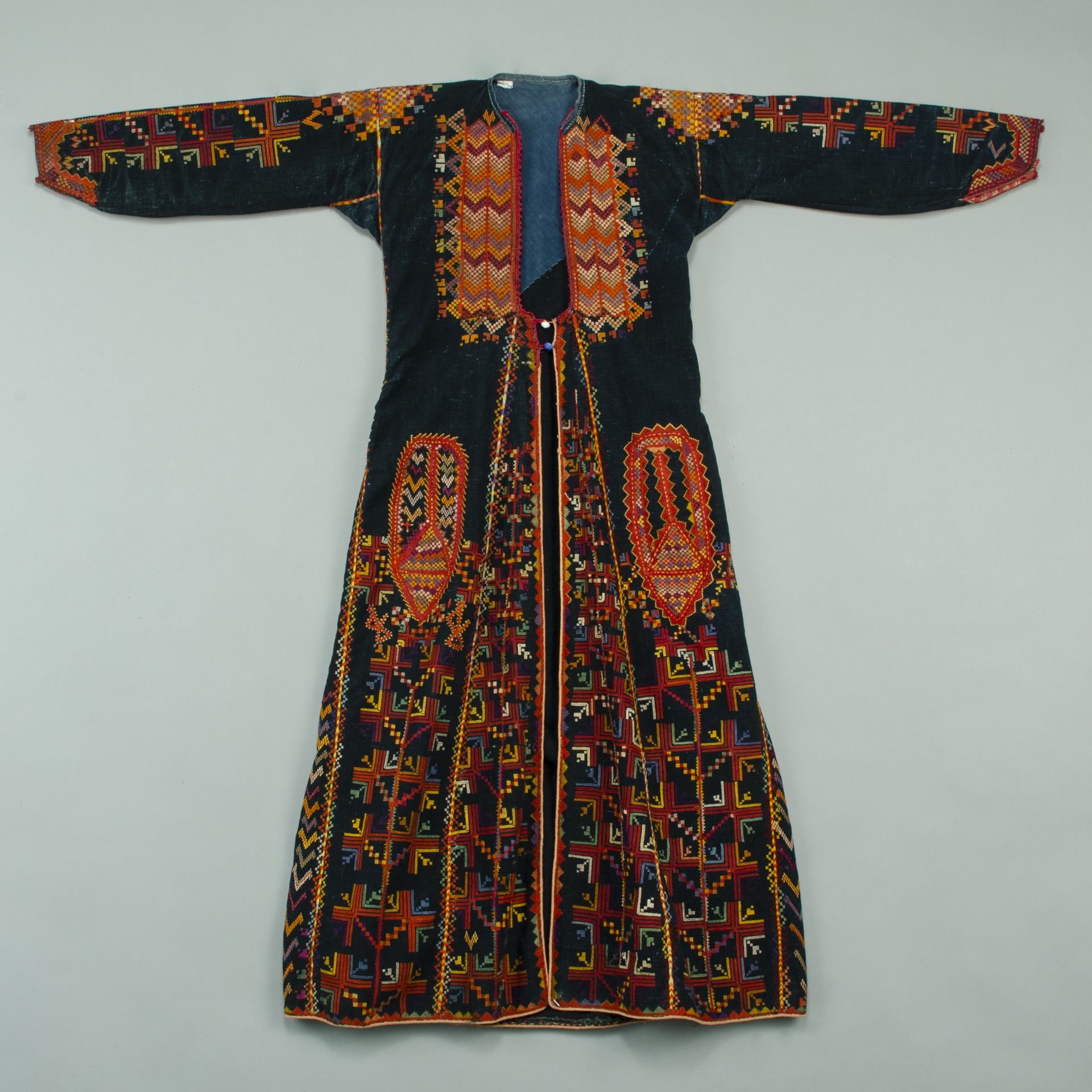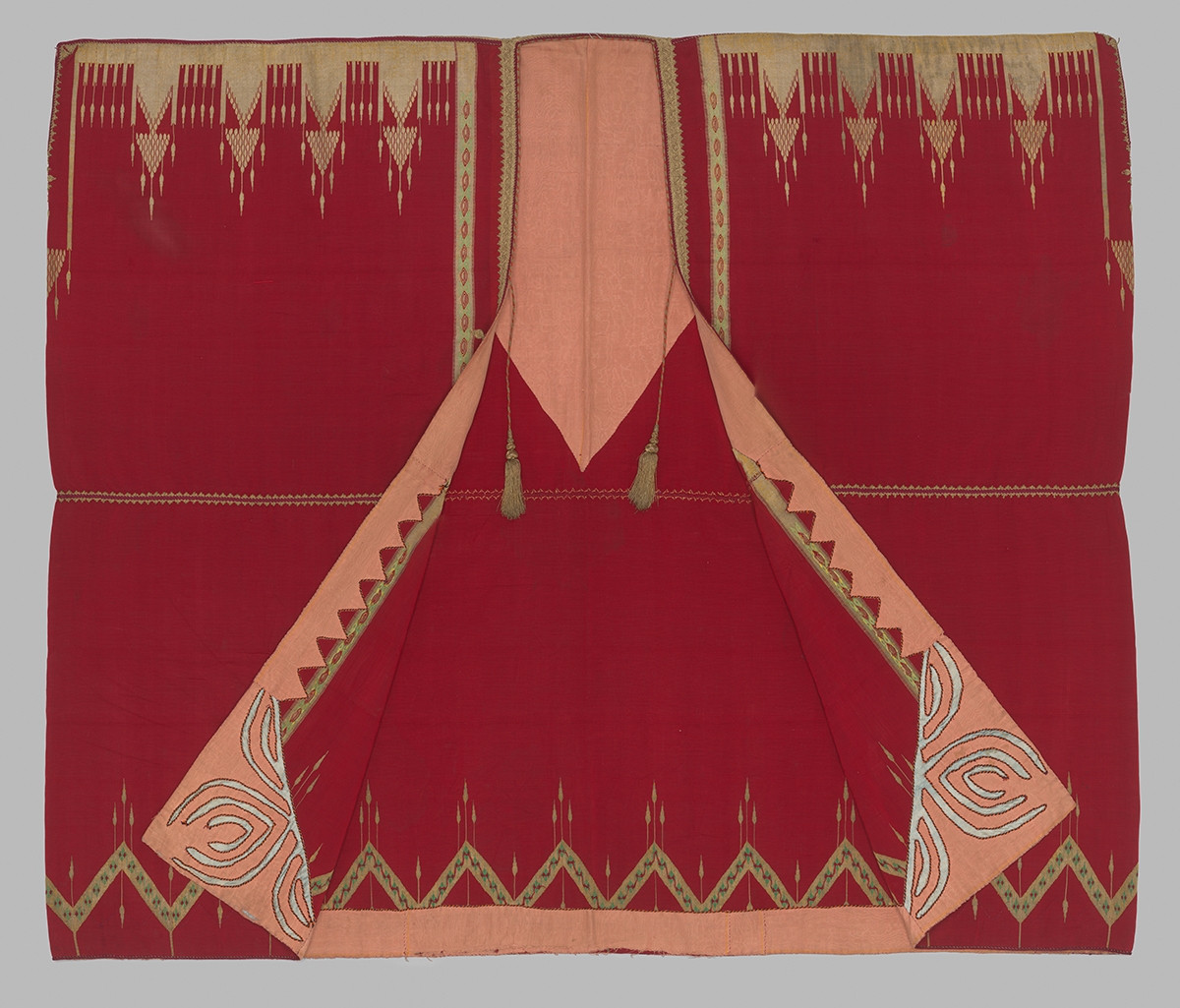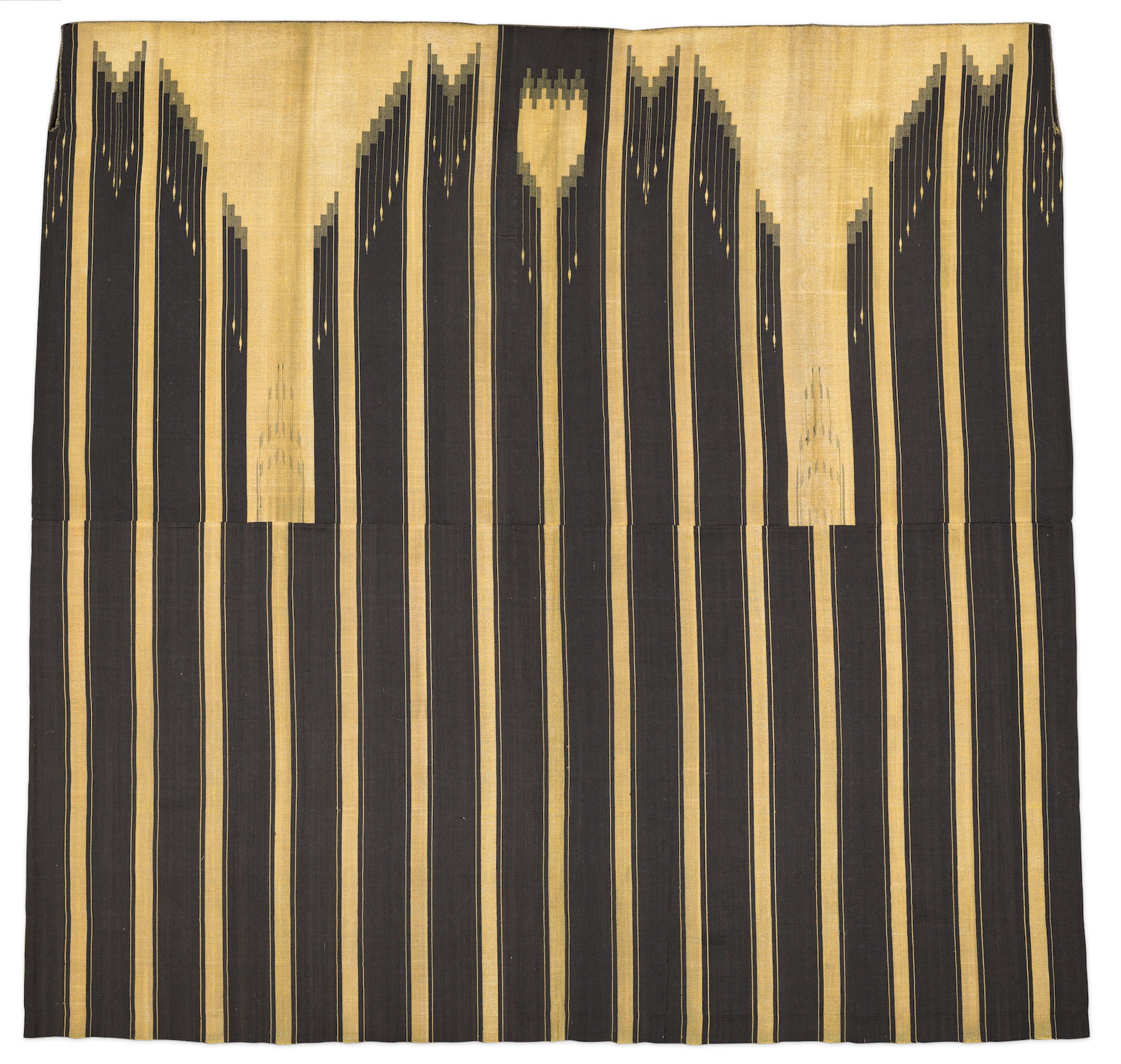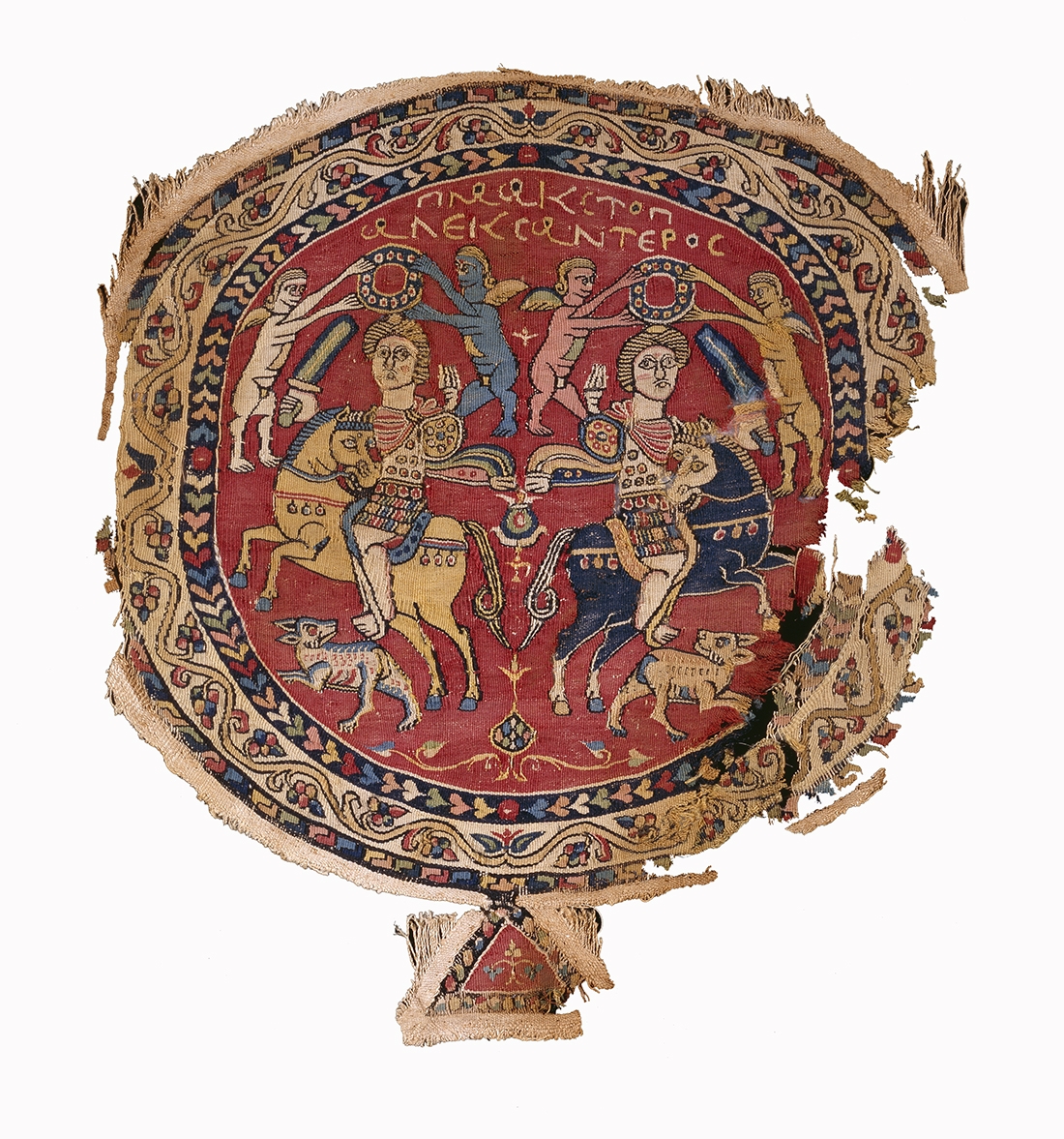Stories of Syria's Textiles: Art and Heritage across Two Millennia
October 15, 2023 - January 28, 2024 Get ticketsStories of Syria’s Textiles: Art and Heritage across Two Millennia highlights textiles’ outstanding contributions to Syrian culture during antiquity and between the mid-nineteenth and mid-twentieth centuries, as well as today.
Syrian textiles are remarkable for their artistic, social, and economic significance. Finely woven clothing and furnishings are the work of highly skilled weavers and other artisans. They are also important markers of status and identity that reflect the local traditions of Syrian cities, villages and nomadic groups, and valuable luxury goods that were traded widely. Syria’s climate is ideal for silk production, and historically it was a major crossroads on the Silk Routes that connected East and West.
Since 2011, Syria has been embroiled in conflict that has resulted in the deaths of over 300,000 civilians. Millions have been displaced both internally and as refugees in other countries. Numerous archaeological sites, historic monuments, and museums have also been damaged or destroyed. With respect to textiles, longstanding traditions and knowledge are at risk of disappearing. Many Syrians are now working to preserve their tangible and intangible heritage for current and future generations, despite these exceptionally difficult conditions.
Stories of Syria’s Textiles aims to contribute to these efforts, and asks us to consider what heritage means, in its broadest sense, and why its protection merits intense commitment.
Stories of Syria’s Textiles: Art and Heritage across Two Millennia is curated by Blair Fowlkes Childs, Adjunct Professor, Columbia University and the Institute of Fine Arts, New York University, in collaboration with consulting curator Deniz Beyazit, Curator, Department of Islamic Art, the Metropolitan Museum of Art, and with organizational support from Emily Handlin, Associate Curator of Exhibitions and Collections, Katonah Museum of Art.
For more details about upcoming events and programs, download a copy of the Fall 2023 newsletter.
Explore Stories of Syria's Textiles: Art and Heritage across Two Millennia
The exhibition will be accompanied by a fully-illustrated catalogue co-published by the KMA and Scala Art and Heritage Publishers featuring contributions by Maya Alkateb-Chami, Blair Fowlkes Childs, Deniz Beyazit, Lisa Brody, Julia Carlson, Martina Ferrari, Rania Kataf, and Janina Poskrobko-Streciwilk. This beautifully illustrated volume highlights the vibrant history and culture of Syria through its exceptional textile production. By presenting a broad range of textiles, created between the 2nd century to the present day, the accessible text reveals Syria’s central role in the development of global art and commerce, and more broadly, the significance of textiles as a form of material culture that reveals complex socio-political narratives. Published twelve years after the conflict in Syria began in 2011, this book underscores efforts to document, preserve, and revitalize Syrian cultural heritage, both tangible and intangible. Its examination presents new scholarship commissioned from leading archaeologists, textile conservators, art historians, and heritage professionals, and drawn from the knowledge of silk producers, weavers, and other artisans. With exquisite design and an approachable narrative, this thoughtful publication provides a valuable immersive and educational experience to arts professionals, connoisseurs, and the general public.
morelessPurchase NowFor more details about upcoming events and programs, download a copy of the Fall 2023 newsletter.
Get Your Copy (PDF)The Katonah Museum of Art is pleased to present the exhibition Stories of Syria’s Textiles: Art and Heritage across Two Millennia, on view from October 15, 2023 to January 28, 2024. The exhibition offers a fresh and compelling perspective on Syria’s rich cultural heritage through its textile production from antiquity to the present.
morelessRead More (PDF)Exhibition Support
Stories of Syria’s Textiles: Art and Heritage across Two Millennia and its accompanying catalogue were realized with generous funding from the Coby Foundation and the Nazmiyal Collection. Additional support has been provided by the Barakat Trust, the Gladys Krieble Delmas Foundation, Anne and Joel Ehrenkranz, the Ralph & Ricky Lauren Foundation, and the Director’s Circle of the Katonah Museum of Art: Mike Davies, Isabelle Harnoncourt Feigen, Vida Foubister, Nisa Geller, Virginia L. Gold, Linda Nordberg, Amy Parsons, Yvonne S. Pollack, Rochelle C. Rosenberg, Rebecca Samberg, and Richard and Audrey Zinman.

The Katonah Museum of Art is proud to be a grantee of ArtsWestchester with funding made possible by Westchester County government with the support of County Executive George Latimer. The Katonah Museum of Art’s programs are made possible by the New York State Council on the Arts with the support of the Office of the Governor and the New York State Legislature.

For press inquiries, please contact Irini Zervas | irini@suttoncomms.com | T: +1 212 202 3402 | M: +1 727 510 6205
Credits
Textile with rosettes, from Dura-Europos, ca. 200–256. Wool; weft-faced tapestry weave, 9 × 12 ½ in. (22.9 × 31.8 cm). New Haven, Yale University Art Gallery, Yale-French Excavations at Dura-Europos, 1933.487. Photo: Courtesy of Yale University Art Gallery.
